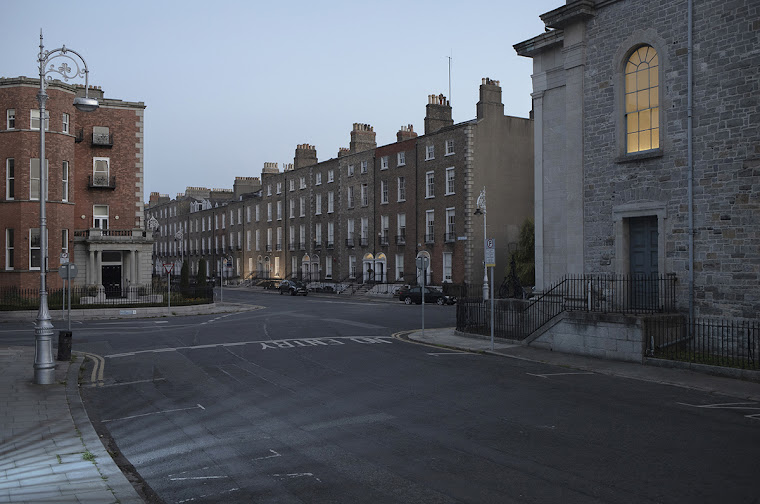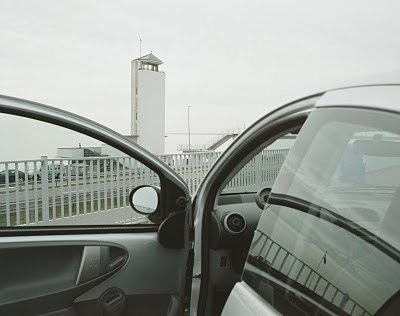My feeling, in essence, is that it makes sense to me that I should be here in Fryslan doing what Im doing at this point in my life (photographic life that is). And in a way re-assess my journey here. I was prompted to do so recently in a Dutch (again) online magazine interview ahead of my trip here. It went something like this:
"I started my relationship with photography about ten years ago. The Irish poet Patrick Kavanagh once said that he ‘dabbled’ in verse and it became his life. I am similar to this: I ‘dabbled’ in photography and it became central to my life. It has become the means of getting to know the world in a new way. I feel that photography has given me a new way to comprehend life; a way of recognizing and grasping the intangible meaning in the world. There is a moment when photographing, from time to time, when there is an overriding feeling of revelation - finding a zen-like harmony with the elements of nature, the ambiguities of human life and the labors of society to organize and articulate a meaningful world. It is a difficult feeling to explain. The visible surface of the earth comes alive with ethereal sensations – full of meaning, history and contradiction. The 'act' of photographing attempts to make these sensations tangible. It (the act) encourages and permits a quiet comprehensive musing over the most seemingly banal and ordinary of things. It offers an invitation to scrutinize, to ponder, to connect with whatever piece of life it privileges."
This was a short reflection on the 'act' of photographing - the impulse to do it and the purpose of the whole enterprise. It is something I feel I really would like to express in words. Though trying to fix that experience with our primary language is impossible and maybe, to a degree, pointless. Maybe photography offers a kind of ‘inter-subjectivity’ that transcends words and other ways of knowing.
I have seldom found photographers who tackle this idea of the 'act', or the 'impulse' or the 'ritual' (to quote earlier blog posts) in a real way. There are not many significant writings which express the feeling of an artist struggling to understand and comprehend their own impulse to photograph. Perhaps my tutor in Dun Laoghaire David Farrell has, from memory, in his lectures, or in his recent blogsite writings, offered an insight. I know Jeff Wall does to a degree. I once read an interesting and insightful interview with Wolfgang Tillmanns which explored the photographic act. Similarly by the artist Phil Collins. Simililarly by Ryan McGinley. Similarly by Joel Meyorwitz. All of which have written accounts of the psychological processes of photography and all of which have produced work which has hit a tone with me. But, recently I found this affecting quote. It is by the incredible Walker Evans (the photographers photographer). Speaking in 1971, he is reflecting back to his 'American Photographs' of 1938 - which resulted from his 'subsidized freedom' (as he saw it) from the auspicies of the Farm Security Administrarion and its ideological mission and working constraints. Whats amazing about it is that towards the end of a life dedicated to photography, even Evans seems to accept that he cannot find an answer, or cannot rationalize the complexities of the photographic impulse:
"I now feel almost mystical about it. I think something was guiding me, was working through me. I really do. And, without being able to explain, I know it absolutely, that it happens sometimes, and I know by the way I feel in the action that it goes like magic - this is it.! Its as though there is a certain secret in a certain place and I can capture it. Only I can do it at this moment, only this moment and only me. You become a kind of a medium.. Some things are sort of done through you somehow. Thats a hell of a thing to believe, I believe it or I wouldnt act it!".
 Control and organization is the key here. The actual landscapes themselves are controlled. One of the underlying themes of the projects I did was that command over nature that is an important part of the physical reality of rural Fryslan, and indeed part of the Fryslan rhetoric. One thing that was made clear to me was that every inch of land is used, well organized, well controlled, well managed and each has a distinct purpose. Further to this every natural resource is utilized to some degree. Easy to see that we here in Ireland could learn a lot from these methods of land use and resource management. I have carried this control element through the approach that I have taken – a rigorous geometry which I feel represents the landscapes of the north of Fryslan best.
Control and organization is the key here. The actual landscapes themselves are controlled. One of the underlying themes of the projects I did was that command over nature that is an important part of the physical reality of rural Fryslan, and indeed part of the Fryslan rhetoric. One thing that was made clear to me was that every inch of land is used, well organized, well controlled, well managed and each has a distinct purpose. Further to this every natural resource is utilized to some degree. Easy to see that we here in Ireland could learn a lot from these methods of land use and resource management. I have carried this control element through the approach that I have taken – a rigorous geometry which I feel represents the landscapes of the north of Fryslan best. The work adopts a more ‘German’ approach to documentary. But it also keeps within Dutch landscape traditions – subverting them in a way. The representations of landscapes in Dutch pictorialist traditions keep a low horizon approach to draw attention to the epic and sublime cloud features. My approach is to draw attention to these consistently flat and compact areas of land. This approach means a more neutral, debased skyline and an emphasis on the topographic differences.
The work adopts a more ‘German’ approach to documentary. But it also keeps within Dutch landscape traditions – subverting them in a way. The representations of landscapes in Dutch pictorialist traditions keep a low horizon approach to draw attention to the epic and sublime cloud features. My approach is to draw attention to these consistently flat and compact areas of land. This approach means a more neutral, debased skyline and an emphasis on the topographic differences. The approach follow interconnecting photographic (and artistic) traditions which have informed much of my work to date. Firstly, they are photographed in a tradition of Neue Sachlichkeit, or ‘new objectivity’ – a more detached and objective approach to documentary which dates back to the 1920’s Germany. This approach uses, for instance, grids and ‘typologies’ to display their images in a formal order (for instance, subjects and objects photographed in a similar manner and grouped into ‘types’ which allow comparative study between each). This approach displays a minimalist quality which was prescient to later photographic work that appealed to the Conceptualism of the early 1970s (my work has adapted elements of Conceptual Art). Such approaches can also be found in the work of the generation of American photographers, such as the ‘New Topographics’, who have since come to be understood as marking an important shift in Landscape practice; offering a ‘re-thinking’ of landscape traditions in the 1970s. Interesting that this movement can, to a degree, be seen as a reaction to the pictorialist, utopian photography of, for instance, Ansel Adams who adamantly depicted the American landscape as an entity of unscathed and organic beauty. In effect, the photographers of the New Topographics movement strove to show the rapidly increasing imprint that man was imparting on the landscape. They turned their cameras towards newly built tract houses, industrial parks, expansive highways and commercial strip malls as proof of man's impetuous development. These approaches have informed my Midlands work and, to a degree, the recent continuation of this project - ‘Suspended State’ and I found that this approach is a fitting way to represent the landscapes of the north of Fryslan.
The approach follow interconnecting photographic (and artistic) traditions which have informed much of my work to date. Firstly, they are photographed in a tradition of Neue Sachlichkeit, or ‘new objectivity’ – a more detached and objective approach to documentary which dates back to the 1920’s Germany. This approach uses, for instance, grids and ‘typologies’ to display their images in a formal order (for instance, subjects and objects photographed in a similar manner and grouped into ‘types’ which allow comparative study between each). This approach displays a minimalist quality which was prescient to later photographic work that appealed to the Conceptualism of the early 1970s (my work has adapted elements of Conceptual Art). Such approaches can also be found in the work of the generation of American photographers, such as the ‘New Topographics’, who have since come to be understood as marking an important shift in Landscape practice; offering a ‘re-thinking’ of landscape traditions in the 1970s. Interesting that this movement can, to a degree, be seen as a reaction to the pictorialist, utopian photography of, for instance, Ansel Adams who adamantly depicted the American landscape as an entity of unscathed and organic beauty. In effect, the photographers of the New Topographics movement strove to show the rapidly increasing imprint that man was imparting on the landscape. They turned their cameras towards newly built tract houses, industrial parks, expansive highways and commercial strip malls as proof of man's impetuous development. These approaches have informed my Midlands work and, to a degree, the recent continuation of this project - ‘Suspended State’ and I found that this approach is a fitting way to represent the landscapes of the north of Fryslan.










